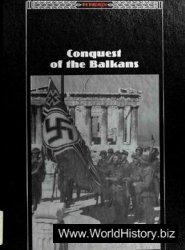The centerpiece of Herod's building program in Jerusalem was his reconstruction of the second temple, which had been consecrated in 516 B. C.E. Herod rebuilt the temple itself, as well as the esplanade or open platform surrounding it (the Temple Mount). Although no remains of the temple survive, today's

7.10 Reconstruction of the Herodian Temple Mount. By Leen Ritmeyer ©.
Temple Mount is a product of Herod's building program. Work on the temple building was carried out between ca. 23/20 and 15 B. C.E., but construction on the massive complex surrounding it continued until 64 C. E., a situation alluded to by the author of the Fourth Gospel: “Jesus answered them, 'Destroy this temple, and in three days I will raise it up.' The Jews then said, 'This temple has been under construction for forty-six years, and will you raise it up in three days?'" (John 2:18—19). Josephus reports that the construction of the temple, which was carried out by priests, took ten years, during which time rain fell only at night.
Herod monumentalized the temple building by expanding the esplanade on which it stood (the Temple Mount), creating one of the largest sacred precincts in the ancient world (ca. 140,000 square meters). To make the platform level, the bedrock had to be cut back on the north, where it rises. To the south, where the bedrock drops toward the City of David, the expanded platform was supported on a series of underground arches or vaults called a cryptoporticus. The cryptoporticus supported the pavement and buildings above, but without the outward pressure and danger of collapse that would have been created had the area simply been filled in with a mass of dirt and stones. The arches of the cryptoporticus still survive (although the area is closed to the public). They are now called Solomon's Stables, a name that originated when Jerusalem was part of the Crusader kingdom in the Middle Ages. At that time, different orders of knights occupied or were given different parts of the city. One order of knights occupied the Temple Mount, and therefore became known as the Knights Templar. They attributed the cryptoporticus to Solomon (because the Temple Mount had been the site of Solomon's temple) and used the area for stabling their horses.

7.11 The Western Wall. Courtesy of Zev Radovan/BibleLandPictures. com.
Herod enclosed the expanded platform with a temenos wall (the Greek word temenos refers to a sacred precinct). Herod's extension is visible on the south side of the “seam" at the southeast corner of the Temple Mount, where Herodian style masonry abuts earlier construction (see Chapter 4). The upper part of the temenos wall was decorated with engaged pilasters (square pillars built into the wall), which broke up the monotony of the masonry by creating a play of light and shadow in the bright sunlight. Pieces of broken pilasters can be seen lying among the heaps of stones that fell from above onto a paved Herodian street on the southwest side of the Temple Mount, evidence of the violence wrought by the Roman destruction of 70 C. E. The bases of a few pilasters are preserved in situ (in their original position) in an underground tunnel at the northwest side of the Temple Mount (under the basements of later buildings abutting the temenos wall). One of the stones in the Herodian temenos wall (on the western side of the Temple Mount) is about 40 feet long and weighs approximately 400 tons! The Western (“Wailing") Wall is part of Herod's temenos wall around the Temple Mount, not part of the temple building itself (which was located on top of the platform, approximately where the Dome of the Rock sits today). The Jewish tradition ascribing special sanctity to the site of the Western Wall (as opposed to other sections of the Herodian temenos wall) probably developed because this was the closest spot to the temple building outside the Temple Mount. After the temple's destruction, it became customary for Jews to congregate here to mourn its loss.

7.12 Wilson's Arch. Courtesy of Zev Radovan/BibleLandPictures. com.
A number of gates in the temenos wall provided access to the Temple Mount, several of which are still visible today, specifically (from north to south) Wilson's Arch, Barclay's Gate, Robinson's Arch (all on the western side of the Temple Mount) and the Hulda Gates (on the south side of the Temple Mount). Wilson's Arch is part of a bridge carried on arches that provided access across the Tyropoeon Valley from the western hill to the Temple Mount (for recent discoveries that suggest a different picture, see the Sidebar on Wilson's

7.13 Robinson's Arch. Courtesy of Zev Radovan/BibleLandPictures. com.
Arch). Today, the underside of the bridge's first (easternmost) arch abuts the north side of the Western Wall, in an underground area reserved for men's prayers (but open to everyone for visits at certain times). The remains of Barclay's Gate are preserved on the south side of the Western Wall (in the women's section), consisting of part of the doorpost and lintel, with the original passage blocked by smaller stones. Robinson's Arch is located at the southwest corner of the Temple Mount, visible as the beginning of a large arch projecting from the temenos wall. Originally, Robinson's Arch was considered analogous to Wilson's Arch — a bridge across the Tyropoeon Valley carried on arches. However, excavations conducted by the Israeli archaeologist Benjamin Mazar after 1967 around the southern and western sides of the Temple Mount brought to light part of a staircase, which indicated that Robinson's Arch turned a ninety-degree angle and led into the Tyropoeon Valley below. This was a busy commercial area with a broad paved street lined by shops (the same street crushed in 70 C. E. by falling stones from the temenos wall above).
The Hulda Gates are two gates, each originally with double doors, in the south wall of the Temple Mount. They provided the main access for pilgrims to the Temple Mount, who could purify themselves first in the large miqva'ot outside the gates or in the pool of Siloam to the south. Unlike the other gates just described, which are named after nineteenth-century British explorers, Hulda is an ancient name (perhaps referring to the nearby tomb of the prophetess Hulda, or perhaps deriving from the Hebrew word for mole, as the gates led to underground passages). The Hulda Gates worked as a pair, with the eastern

7.14 Hulda Gate with steps. Courtesy of Zev Radovan/BibleLandPictures. com.
Set used for entrance to the Temple Mount and the western set used as the exit. Both sets led to passages below the Royal Stoa (discussed in the following paragraph), which brought visitors into the Temple Mount. Part of one of the doorways of the western set of gates is still visible today, including the doorpost and lintel (with a flat arch above). The passage through the door is blocked by smaller stones, and the rest of the gate is covered by a Crusader tower that is built up against the southern temenos wall. The underground passages, which

7.15 The Temple Mount in the Holyland Model. Courtesy of Zev Radovan/BibleLandPictures. com.
Today lie underneath the al-Aqsa mosque, were decorated with stucco molded with delicate geometric designs.
The Temple Mount esplanade was a huge, open paved space surrounded on the east, north, and west sides by colonnaded porches (porches with columns that supported the wooden beams of a roof), which provided shelter from sun and rain for the masses of pilgrims. A monumental, two-story-high building called the Royal Stoa or Royal Basilica occupied the southern end of the Temple Mount (encompassing the area occupied today by the al-Aqsa mosque, but much larger). As its name suggests, this rectangular structure with rows of columns inside was an all-purpose public building that could be used for various kinds of gatherings and transactions.
The temple — of which nothing survives — stood in the center of the Temple Mount, on a natural outcrop of bedrock that is enshrined today in the Dome of the Rock. The temple was surrounded by its own fortification wall and towers. Scholars disagree about whether the building was oriented toward the east or west (the Holyland Model, which is a scale model of Herodian Jerusalem on display at the Israel Museum, depicts the temple oriented toward the east). The building was approached through two courtyards. The first was the Women's Court, which is where Jewish women congregated (although men and women were not segregated, as men had to pass through the Women's Court).
Nicanor's Gate — named after a wealthy Jew who donated this gate to the temple — marked the passage from the Women's Court to the Court of the Israelites, which was in front of the temple building. Jewish men congregated around the altar in the Court of the Israelites, where the sacrifices were offered by the priests. Only priests were allowed beyond this, into the temple itself.
The only surviving remains associated with the temple itself consist of two Greek inscriptions that originally were set into a low stone fence (called a soreg) that surrounded the temple's fortifications. Greek and Latin inscriptions in the fence prohibited non-Jews (Gentiles) from entering the temple on pain of death. The two surviving Greek inscriptions were discovered in fills to the south of the Temple Mount. The more complete inscription is in the Istanbul Archaeological Museum in Turkey (where it was taken after being found when Palestine was still under Ottoman rule). The second, fragmentary inscription is in the Israel Museum in Jerusalem. The complete inscription says: “No man of another nation is to enter within the fence and enclosure round the temple. And whoever is caught will have himself to blame for his death which will follow." Notice that the agent of death is not mentioned — only that trespassers will die. Josephus provides a remarkably similar description of the soreg inscriptions: “Proceeding across this [the open court] towards the second court of the temple, one found it surrounded by a stone balustrade, three cubits high and of exquisite workmanship; in this at regular intervals stood slabs giving warning, some in Greek, others in Latin characters, of the law of purification, to wit that no foreigner was permitted to enter the holy place, for so the second enclosure of the temple was called" (War 15:417).
Paul was arrested and taken into protective custody after the Jews charged him with taking a Gentile into the temple — apparently the area marked off by the soreg:
Then Paul took the men, and the next day, having purified himself, he entered the temple with them, making public the completion of the days of purification when the sacrifice would be made for each of them. When the seven days were almost completed, the Jews from Asia, who had seen him in the temple, stirred up the whole crowd. They seized him, shouting, “Fellow Israelites, help! This is the man who is teaching everyone everywhere against our people, our law, and this place; more than that, he has actually brought Greeks into the temple and has defiled this holy place." For they had previously seen Trophimus the Ephesian with him in the city, and they supposed that Paul had brought him into the temple. Then all the city was aroused, and people rushed together. They seized Paul and dragged him out of the temple, and immediately the doors were shut. While they were trying to kill him, word came to the tribune of the cohort that all of Jerusalem was in an uproar. (Acts 21: 26—31; NRSV)

7.16 Soreg inscription in the Istanbul Archaeological Museum. Photo by Jim Haberman.
Notice that Paul purified himself before entering the temple, indicating that he observed this requirement of Jewish law. Paul was recognized not by the Judeans (who did not know him), but by the Jews from Asia (=Asia Minor, not the Far East), because he was from Tarsus. They also recognized the Gentile with the Greek name Trophimus, who came from Ephesus (also in Asia Minor). Finally, notice that the Romans took Paul into protective custody to prevent a lynching, suggesting that otherwise the Jewish mob would have been the agents of death. Paul was imprisoned at Caesarea Maritima for a couple of years (see Chapter 8) before being shipped off to Rome for a trial.
Although today we tend to think of the Temple Mount exclusively in religious terms, it was a center of commercial activity as well. The thousands of visitors to Jerusalem's Temple Mount included not only Jewish pilgrims but also Gentiles (who could enter the Temple Mount but not the temple itself). The enormous esplanade, with the Royal Stoa and porticoes, bustled with merchants and vendors, many of them selling sacrificial animals and birds. In fact, Herod's Temple Mount was analogous to ancient agoras or fora (marketplaces), which typically consisted of a large open paved space surrounded by public buildings such as stoas, basilicas, theaters, and temples. Although placing the temple in the center of the marketplace (instead of to one side) is unusual, it is not unparalleled in the Roman world. For example, the Capitolium (temple of Capitoline Jupiter) dominated the center of the forum at Pompeii, with Mount Vesuvius towering above in the distance.
The commercial activity on the Temple Mount is the setting for an episode described in the Gospels — Jesus' cleansing of the temple:
Then they came to Jerusalem. And he entered the temple [the Greek word hieron denotes the Temple Mount in general rather than the temple building specifically] and began to drive out those who were selling and those who were buying in the temple, and he overturned the tables of the money changers and the seats of those who sold doves; and he would not allow anyone to carry anything through the temple. He was teaching and saying, “Is it not written, 'My house shall be called a house of prayer for all the nations'? But you have made it a den of robbers." (Mk 11:15—17; also see Mt 21:12-15; Lk 19:45-46; Jn 2:13-16)
Today this episode is often understood as stemming from Jesus' objection to commercial activity in the temple. However, the notion that Jesus opposed buying and selling on the Temple Mount is anachronistic, as commercial activity associated with temples was taken for granted in the ancient world. Instead, this episode likely was motivated by Jesus' concern for the poor, as suggested by his singling out of money changers and dove sellers. Pigeons and doves were the cheapest form of sacrifice, offered by impoverished people who could not afford more expensive animals such as sheep and goats. The money changers served pilgrims who needed to pay the temple tax, which helped pay for cultic and sacrificial expenses. The Hebrew Bible requires a one-time payment or tax on Israelites who reached adulthood. Shortly before Jesus' time, this requirement was changed to an annual payment for the maintenance of the Temple cult. Furthermore, the tax had to be paid in only one kind of currency — Tyrian tetradrachmas (silver sheqels) - which apparently was preferred by the temple authorities because of the high quality of the silver (92 percent silver or better). Money changers exchanged currency for Jewish pilgrims so they could pay the tax in Tyrian tetradrachmas. Scraping together the cash needed to exchange and purchase the Tyrian silver coins annually must have been a great hardship on the poor. Some other Jewish groups of the late Second Temple period, including the Qumran sect, also opposed the institution of an annual temple tax.




 World History
World History









